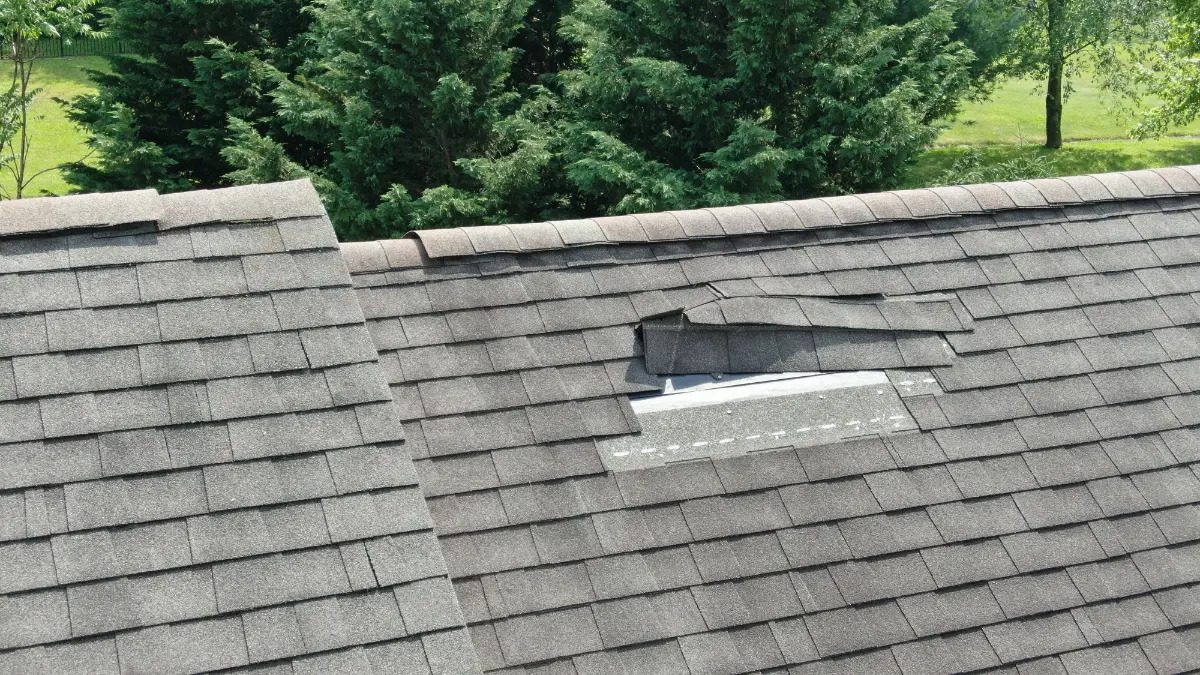In the event you’ve ever seen lacking shingles in your roof, you could ponder whether they pose an actual downside. The integrity of your roof relies on every shingle working collectively to kind a protecting barrier. When even a couple of go lacking, vulnerabilities can develop, resulting in potential water harm. A top-rated steel roofing crew in Rhode Island emphasizes the significance of addressing lacking shingles promptly to forestall leaks and structural points. Understanding the implications of lacking shingles may help householders take the required steps to take care of a safe and weather-resistant roof.
Indicators of Lacking Roof Shingles
Daylight streaming by way of your attic or an accumulation of granules in your gutters could point out lacking shingles. If gentle enters by way of the roof, it suggests a niche the place shingles are absent. Granules in gutters sign shingle deterioration, typically brought on by getting old or storm harm. One other indication is curling or buckling shingles, which might ultimately detach throughout sturdy winds or heavy rain. Observing seen gaps or fully lacking shingles is one other clear signal of an issue. Common roof inspections may help establish these points early, permitting for immediate repairs that stop additional harm.
Can Lacking Shingles Trigger Leaks?
Lacking shingles compromise your roof’s skill to maintain out water. Shingles function a main protection towards rain, snow, and moisture. When a shingle is lacking, even a small hole can permit water to seep into the roof deck, insulation, and inside of the house. Over time, steady publicity to moisture can result in mould progress, wooden rot, and structural deterioration. Even a single lacking shingle has the potential to create an entry level for water, making rapid repairs essential. Routine upkeep and inspections can stop expensive water harm by figuring out and changing lacking shingles earlier than they trigger severe points.
Impression of Climate on Shingles
Excessive climate circumstances, together with sturdy winds, heavy rain, and temperature fluctuations, can considerably have an effect on roof shingles. Excessive winds can loosen or fully take away shingles, exposing the underlayment to moisture. Extended publicity to rain can result in water intrusion, particularly in areas the place shingles have weakened. Temperature shifts trigger shingles to develop and contract, accelerating put on and making them extra liable to cracking or breaking. Solar publicity additionally degrades the protecting asphalt layer in shingles over time, shortening their lifespan. After extreme climate, householders ought to examine their roofs for lacking or broken shingles to deal with any issues earlier than they result in bigger issues.
Dangers of Ignoring Lacking Shingles
Neglecting lacking shingles can lead to important and dear harm to your house. With out correct safety, the roof deck turns into weak to moisture, resulting in rotting wooden and mould progress. Over time, persistent water publicity weakens the roof construction, doubtlessly inflicting sagging or leaks. Lacking shingles additionally improve the chance of wind harm, as uncovered areas permit sturdy gusts to carry adjoining shingles, resulting in additional loss. If left unaddressed, these issues can escalate, requiring in depth repairs or perhaps a full roof substitute. Addressing lacking shingles as quickly as they’re seen helps shield the house’s structural integrity and prevents extra severe points.
Repairing Lacking Roof Shingles
To repair lacking shingles, start by inspecting the affected space for extra harm. Verify for free nails, cracks, or indicators of moisture. When deciding on substitute shingles, select ones that carefully match the present ones in shade and materials. Earlier than putting in a brand new shingle, clear the realm of particles and previous adhesive. Apply roofing adhesive to the again of the substitute shingle and punctiliously slide it into place, making certain it aligns with surrounding shingles. Safe it with nails and seal the sides with roofing cement to supply additional safety towards water infiltration. After repairs, conduct a radical roof inspection to establish another areas that will want consideration. Maintaining with roof upkeep ensures long-term sturdiness and safety towards leaks.

